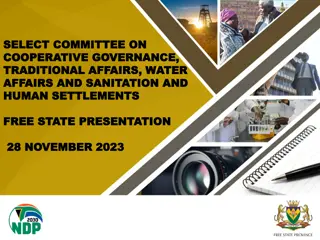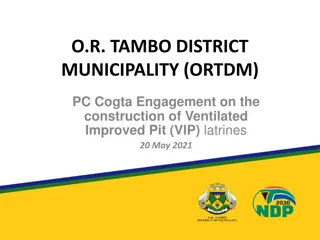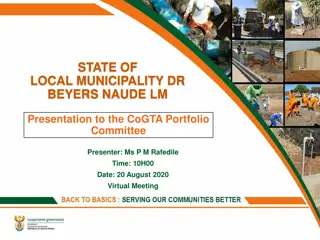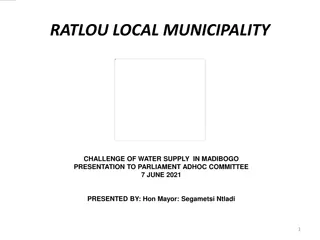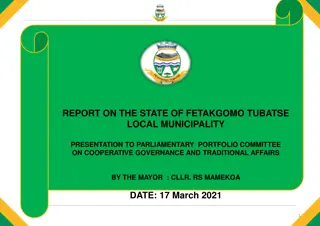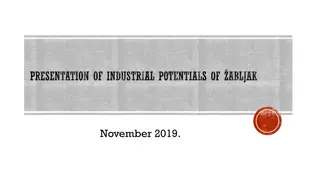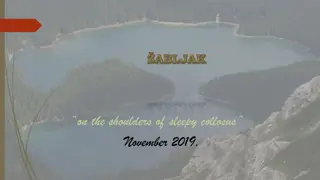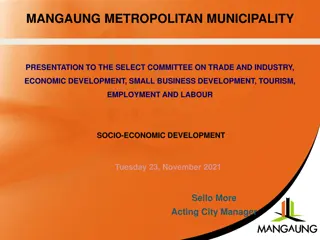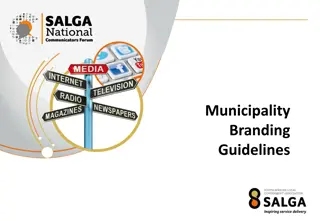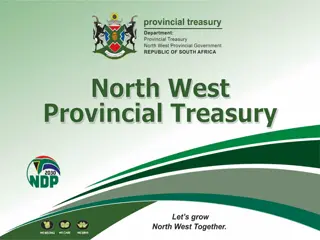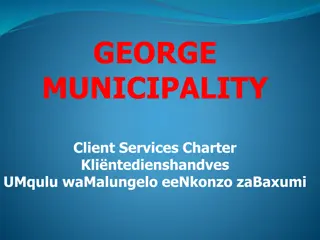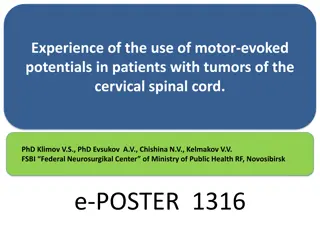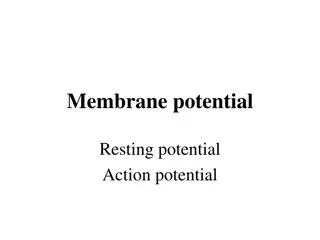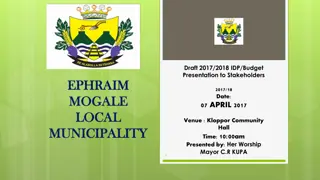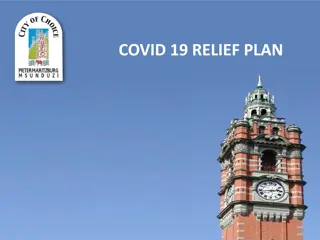Industrial Potentials of Zabljak Municipality: A Overview of Resources and Opportunities
Zabljak, a municipality in northwestern Montenegro, boasts vast industrial potentials in forestry, wood processing, mineral resources, and more. With rich natural resources such as forests and minerals, Zabljak presents opportunities for economic development, particularly in the tourism sector. The area's unique geographic features, including mountain peaks, lakes, and deep canyons, contribute to its appeal for both locals and tourists alike.
Download Presentation

Please find below an Image/Link to download the presentation.
The content on the website is provided AS IS for your information and personal use only. It may not be sold, licensed, or shared on other websites without obtaining consent from the author.If you encounter any issues during the download, it is possible that the publisher has removed the file from their server.
You are allowed to download the files provided on this website for personal or commercial use, subject to the condition that they are used lawfully. All files are the property of their respective owners.
The content on the website is provided AS IS for your information and personal use only. It may not be sold, licensed, or shared on other websites without obtaining consent from the author.
E N D
Presentation Transcript
Presentation of industrial potentials of abljak JUNE 2021.
General information The municipality of Zabljak is located in northwestern Montenegro, in the foothills of the mountain area Durmitor. It has a surface of 445 km2, and, with an altitude of 1456m represents the highest urban settlement in the southeastern Europe. Its coordinates are:43 09 N 19 07 E. The winters are long and cold, summers short and cool and the autumns warmer than springs. The average annual temperature is between 2 and 8 degrees Celsius. There is snow 120 days of the year, greater than 15 centimeters, and the ski terrains, which are at higher altitudes, are covered by snow 150 days of the year and are great for skiing. Snow can be found in higher Durmitor areas all year around, and in the Kalice area, known as Debeli Namet (thick alluvium), which is 200-300 meters long, you can ski in the middle of the summer. abljak is surrounded by 23 mountain peaks of 2200 meters above sea level, 18 mountain lakes, one of them being the famous Black Lake and the Tara Canyon, which is the deepest in Europe. In 1991, in Zabljak, Montenegro was proclaimed as an ecological country, and Zabljak was chosen as its capital. abljak has a population of 3569 citizens. There are 28 settlements within the municipality, organized into 12 local communities, one being a town. However, this number is three to five times bigger if you calculate certain moments of the winter and summer season, when the owners of cottages and tourists come. Agriculture and livestock breeding along with forestry and primary wood processing, are traditional activities of the municipality s population, which nowadays sees its future in tourism and activities connected to it.
Natural resources Forests Forests are one of the important resources in the municipality of Zabljak. Large areas under coniferous and deciduous forests have enabled the development of the wood industry, namely wood processing, which is one of the leading industries. The total area of forests and forest land under the Forest Management Program of the Forest Administration, which was done in 2013 and 2014, amounts to 8,984 ha of state forests and 756 ha of private forests, a total of 9,740 ha. In high economic forests, the basic function is the production of wood and forest by-products, and in special-purpose forests a protective and recreational function. The total wood volume is 2,770,851 m3, of which conifers 2,596,989 m3 or 93.73%, and hardwood 173,862 m3 or 6.27%. The forests are arranged within three management units, namely: "Tepa ke ume", "Gornji aranci" and "Donji aranci".
Natural resources Mineral resources Mineral resources that can be found on the territory of the municipality of Zabljak are: gravel, sand and rock. Keeping in mind that the municipality is of glacial origin and that there is an abundance of these raw materials, they are most certainly significant natural resources. The exploitation is done in two quarries: Njegovudja and Razano Polje. Existing raw materials have proven to be good construction material. Until now, only experimental concessions have been allowed.
Natural resources Land Land is one of the major factors in agricultural production in this area. Great agricultural surfaces provide the opportunity for agricultural development, livestock breeding and farming. The development of agriculture has stagnated lately because only elderly households are engaged in agriculture and also because of poor marketing and low prices. In theory, organic production has shown itself as economically feasible, both in farming and livestock breeding. There are already some entrepreneurs who have certificates for organic production. Agricultural land is mostly made up of grasslands and field. There is also a smaller surface of agricultural land that is made up of arable land and gardens.
Why invest in abljak? Generally speaking, Montenegro as a small and extremely open economic system has the possibility of easily fitting into the world trends of the flow of direct foreign investment. Therefore, the investment ambient as a whole is improved. According to analysis done in Slovenia couple years ago, on potential places to invest in Montenegro, Zabljak was at the top of the pyramid! That official recommendation, which companies, has already launched some Slovenian projects in Zabljak, in the area of communal infrastructure and negotiations are underway for some other. The government of Slovenia, through its Center for International Cooperation and Development(CMSR) is giving a special contribution to Zabljak s development. was given to Slovenian
Why invest in abljak? Advantages for foreign investors which Montenegro offers: Political, monetary and macroeconomic stability Simple START UP Liberal economic regime for foreign trade, Favorable tax policies International accounting standards Rise in economic freedom Geographic location and climate conditions Montenegro is a member of the World Trade organization and signatory to multilateral and bilateral agreements Agreement on stabilization and association with the European Union, CEFTA 2006, EFTA, Russia, Belarus and Turkey, which enables it the cumulation of origin and duty free trade with about 800 million consumers. NATO member
Incentives that abljak offers Possibility to pay the agreed fee for communal equipment of construction land in installments (25% of the agreed amount is paid on the day of signing the contract on communal equipment of land, and the rest in the next 3 years); If the fee is paid at once, it is reduced by 15%; There is also a possibility for the investor to independently perform communal land equipping; Tax rates range from 0.27% for residential buildings under construction, to a rate of 0.54% for secondary housing; Regarding facilities important for investment and business development, rates are also very low, bearing in mind that they can be defined by law up to 1%: For business facilities and business premises (business buildings, business premises and apartments converted into business premises) - 0.41% For production facilities (halls and other premises for performing production activities) - 0.25% For warehouses -0.25%
Incentives that abljak offers For a catering facility located in the zone of a priority tourist locality that is in operation 12 months a year, the tax rate may be reduced: for a catering facility: -category 4 **** - 20%; -categories over 4 **** - 50% Land used for agricultural purposes is exempt from tax; Support to agricultural producers through the work of the Agrobusiness Info Center; Participation of local government in agricultural insurance; Participation of local government in milk purchase; Support in the grain harvesting process; Support for participation in fairs; Support for the establishment of associations and clusters; Support to employment through cooperation with the Employment Service on numerous projects and organization of trainings for acquiring new knowledge and skills of unemployed persons.
Business zones/industrial locations in abljak The spatial urban plan of the Municipality of Zabljak defines business development zones: 1. Business zone Njegovu a; Njegovu a and sawmill; Njegovu a II; 2. Business zone Vruljci; 3. abljak working zone; 4. Service zone
Business zones/industrial locations in abljak Within these zones, available business / industrial sites are: Location:Njegovu a II Address: Njegovu a bb Business zone: Njegovu a Property:Private Size of urban parcel 4 ha Purpose: industry and manufacture 1.
Business zones/industrial locations in abljak 2. Location: abljak I Address:Narodnih heroja bb(Klje tina) Business zone: Service zone Property:100% public Size of urban parcel 5.113m2 Purpose: industry and manufacture
Business zones/industrial locations in abljak 3.Location: abljak II Address:Narodnih heroja bb(Klje tina) Business zone: Service zone Property:100% public Size of urban parcel 21.527m2 Purpose: industry and manufacture
Business zones/industrial locations in abljak 4. Location: abljak III Address:Narodnih heroja bb(Klje tina) Business zone: Service zone Property:100% public Size of urban parcel 2.049m2 Purpose: industry and manufacture
Business zones/industrial locations in abljak 5.Location: abljak IV Address:Narodnih heroja bb(Klje tina) Business zone: Service zone Property:100% public Size of urban parcel 1.372m2 Purpose: road traffic (gas station)
Business zones/industrial locations in abljak 6. Location: abljak V Address:Narodnih heroja bb(Klje tina) Business zone: Service zone Property:100% public Size of urban parcel 1.418m2 Purpose: industry and manufacture * More information about all industrial locations at link: http://zabljak.me/docs/1572606691- Katalog%20lokacija%20ponuda%20industrijskog%20zemljista%20u%20%20Opstini%20Zabljak- Catalog%20of%20location%20offers%20of%20industrial%20land%20%20in%20the%20%20Munici pality%20of%20%20Zabljak.pdf
Traffic communication It is very quick and easy to get to Zabljak. In 2010, the road Risan- Zabljak was opened and therefore shortened the way between the south and the north, and now one can reach the coast from abljak in 2-2.30 h. The capital city, Podgorica is about 2h driving distance from Zabljak(120 km). Distance to other regional centres: Belgrade- 400km; Sarajevo-167km; Zagreb-535km;Tirana-270km; 337km;Ljubljana-674km, The nearest port is Bar(Montenegro)-197km. It is possible to travel from Bar to Mojkovac by train, and then take the bus to Zabljak. So, the closest railway station is in Mojkovac, 69 km from Zabljak. The nearest airports:Podgorica(120km), Dubrovnik(260km). Skoplje- Tivat(250km),
Traffic communication Border crossings If you are driving from Serbia, you can cross the border in Prijepolje, drive through the Montenegrin town Pljevlja and so reach Zabljak (state border crossing Jabuka - 98 km) or you can drive though the Montenegrin town Bijelo Polje and Mojkovac and so reach Zabljak (state border crossing Brodarevo -110 km). If you are travelling from Croatia, from the direction Dubrovnik (state border crossing Debeli brijeg), you arrive by driving through Herceg Novi, Risan and Niksic and so reach Zabljaka (200 km) or driving through Dubrovnik- Trebinje- Niksic- Zabljak (170 km). If you are travelling from Bosnia and Herzegovina, through Foca and crossing at the border in Scepan Polje to Zabljak the distance is 150 km, through Pluzine and Mount Durmitor, the distance is 85 km, and if you cross at the border Meteljka through Gorazde- Cajnice- Pljevlja- Zabljak, the distance is 87 km. If you travel through Trebinje- Vilusi- Niksic to Zabljak, the distance is 170 km, by crossing the border Vracenovici.




